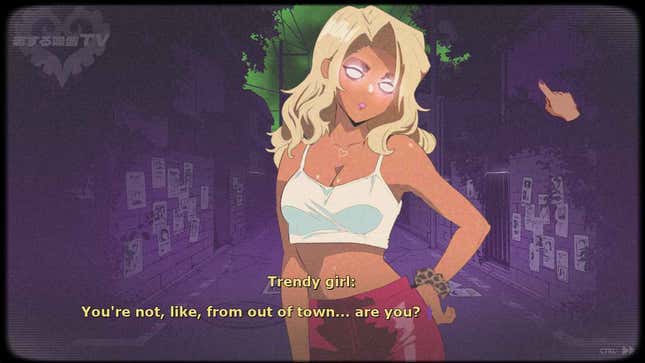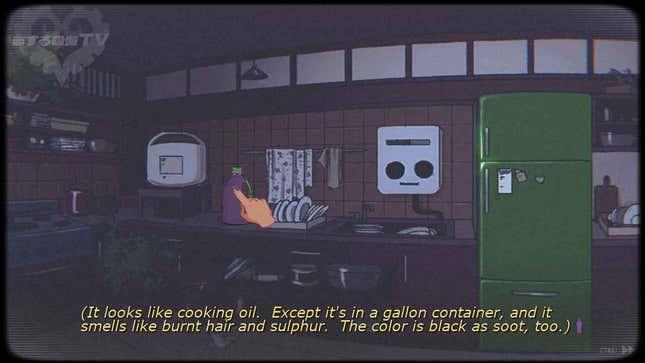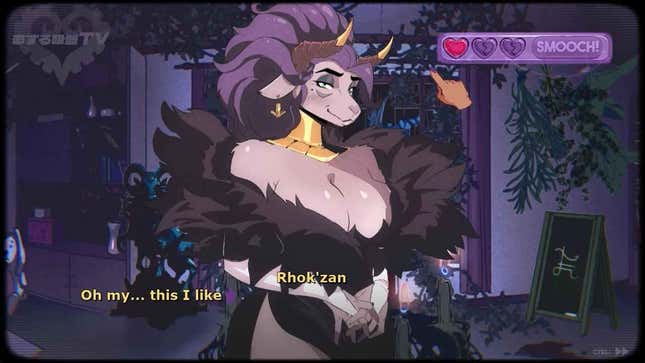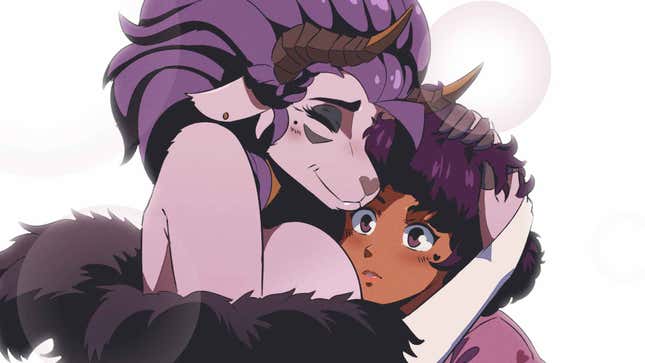When Sucker for Love: First Date was released in 2022, its blend of cosmic horror vibes with dating sim mechanics made it a cult hit. But it’s essentially one big joke about how funny it would be to make Cthulu into a busty babe that you could kiss as long as you did progressively more horrific things for her. It’s a good joke admittedly, and one that I enjoyed, but it only goes so far, and the game’s genre mashup was not without some significant flaws. With that in mind, the prospect of a sequel seemed double-edged. On one hand, I want more cosmic horror hotties to swoon over, but on the other, I thought a second game would immediately feel tired. Thank god (or whatever cosmic deity you want) that I was so very wrong.
Sucker for Love: Date to Die For is a magnificent sequel to First Date (both developed by Akabaka). It refines what worked in its predecessor while adding new twists and turns to both the horror and romance aspects of the game. The result is more terrifying, more swoon-worthy, and more balanced, a game that accomplishes its goals in style. A tighter focus on love and a more expansive sense of dread means that Date to Die For will have your heart racing from start to finish.
Fright night

Returning to her hometown after receiving a letter seemingly from her parents one year after they died, our protagonist Stardust finds herself chased down by cultists and trapped within her old house. Her only hope of surviving? Summoning the cosmic deity responsible for this nightmare. Stardust just didn’t expect the deity in question to be so…incredibly attractive. That deity would be Rhok’zan, a busty goat MILF. Rhok’zan and Stardust are immediately infatuated with each other and agree to team up to stop the cultists and escape the house.
To do that, Stardust has to complete a series of rituals that each have their own list of requirements. Maybe you need to collect ingredients like fresh meat and a bowl of blood or do the ritual in a specific room. Accomplishing all of this sends Stardust out into the creaky rooms of her home. This haunted house setting is one of Date to Die For’s best changes from its predecessor. First Date was a constrictive experience that limited you to one apartment (and occasionally the walkway outside). While both games require you to complete rituals, First Date kept everything you needed inside one small location. That meant the horror was more tonal than experiential, as there wasn’t much of a threat. Date to Die For, on the other hand, forces you to venture beyond the safety of Stardust’s bedroom.

Every room is expertly set-dressed, with unexplained blood stains, cobwebs, and more driving home that you are not safe. Meanwhile, the audio constantly unnerves, playing a spooky score punctuated by sound effects like creaking floorboards. Roaming the house takes the form of a dungeon crawler. Clicking from room to room is interrupted by doors that must be manually slid open. Much like in the original Resident Evil, not knowing what awaits beyond any door makes your heart race with anticipation. The first time you slide a door open without thinking and are met with an eldritch horror that leaps at the camera and kills you, try not to jump. It’s a tough task.
While there are only so many rooms in the house, exploring remains a tense, nerve-wracking affair. That is in part due to the game’s taut, roughly five-hour runtime. But in a more ingenious move, it also has to do with how the game’s four chapters use horror differently. For example, one chapter has you traversing the house like a maze, avoiding rooms with dangerous enemies. Another lets loose a single enemy that hunts you down from room to room, like Resident Evil 2 Remake’s terrifying Mr. X. The setting remains the same, but the threat is ever-changing and keeps you on your toes. These dangerous excursions throughout the house in between rituals open up the game and let Date to Die For fully embrace its horror side.
I’m a sucker for you

But when it comes to romance, Date to Die For makes the unexpected move to be more reserved than its predecessor. One of the big draws of First Date is the game’s three eligible cosmic entities. Date to Die For only has one, Rhok’zan. But by focusing on just one love interest, Date to Die For makes Rhok’zan outshine all three of First Date’s monsters combined. That has a lot to do with the limited potential of First Date’s joke-y premise: you’re a horny dude who summoned these monsters in hopes of kissing them. Again, sort of funny, but not a long runway there.
In a reversal of First Date’s protagonist, Stardust isn’t in the cult. She is doing this out of necessity but isn’t in on all the horror stuff. Watching Rhok’zan try to educate Stardust and having Stardust mostly shrug off the scary stuff in favor of getting flustered over Rhok’zan’s looks is a delightful bit of character work. The two have a unique rapport that starts off humorous but quickly grows into something much deeper and more beautiful. Because Date to Die For only has one love interest, we get so much more time to see both Stardust and Rhok’zan grow as individuals and as a couple. Any good dating sim needs to make the player fall in love just as much as the protagonist does. Date to Die For does that.
Rhok’zan is a compassionate deity who, on top of being a certified MILF, is just motherly to all of her followers. She’s clearly struggling with the pain she’s caused and despite being a god, she has a lot of insecurities. Watching her learn to show them to Stardust is pretty damn heartwarming. And no ode to Rhokzan’s loveliness would be complete without giving ample praise to Kirsten Candelore, whose sultry voice is able to swing between seductive and soothing at the drop of a hat.
A benefit of reducing the number of love interests is also that a real supporting cast gets to exist in Date to Die For. Each chapter has one character that isn’t Rhok’zan that you get to interact with and get to know. This makes the world feel so much bigger, like it doesn’t exist solely as a flimsy backdrop for your efforts to get lucky with a hot goat lady. The extended cast of Date to Die For lets you see another side to both Stardust and Rhok’zan that isn’t just about romantic love, but relationships in all forms.
Love wins

By realizing more effective versions of both the original game’s horror and romantic elements, Date to Die For emerges as a more cohesive work that ends up delivering a wonderful message as well. First Date was so often obsessed with the joke, and its ending felt much the same. Date to Die For takes itself more seriously (though never too seriously), and because of that the thematic elements of horror and romance become similarly cohesive. The biggest issue facing Rhok’zan and Stardust is the fear of the unknown. While the cosmic dread that threatens to keep them trapped in a seemingly endless loop of horror is obviously terrifying and real, it’s also a metaphor for something that’s arguably even scarier: love.
Both Rhok’zan and Stardust are flawed characters with trauma relating to the idea of giving and receiving romantic love. The threat of something so big engulfing their identity causes both to sometimes cower away and distract themselves from the possibility of a deeper love by leaning into suggestive humor. But the game gives them a path toward happiness that breaks a cycle of trauma. A lesser game wouldn’t be able to reach this cathartic conclusion, but because Date to Die For balances its many influences so well, it pulls it off. It’s not a good horror game or a good dating sim. It’s a great version of something else that is all its own.
.
